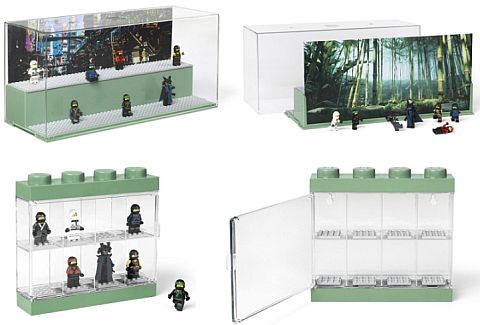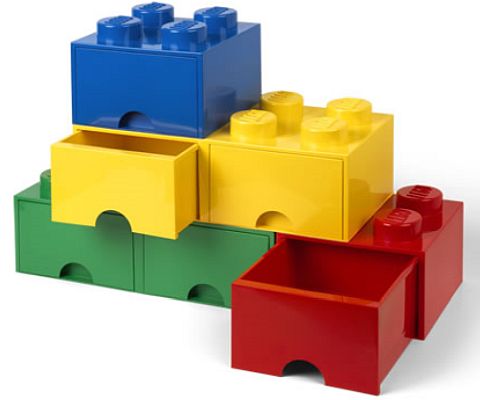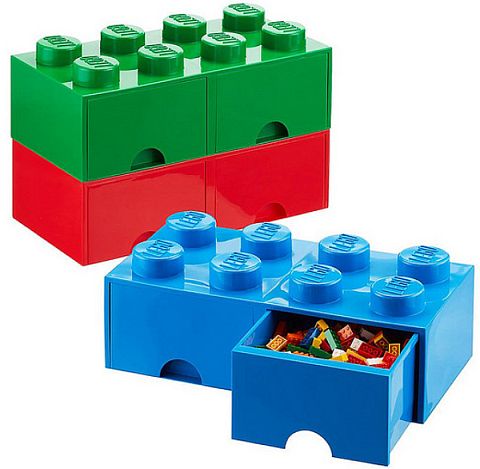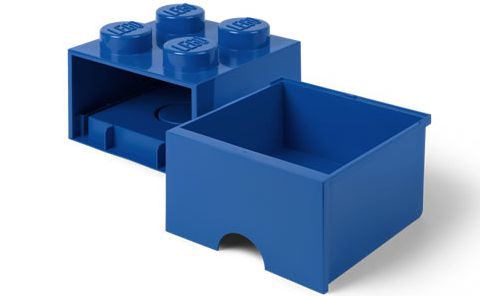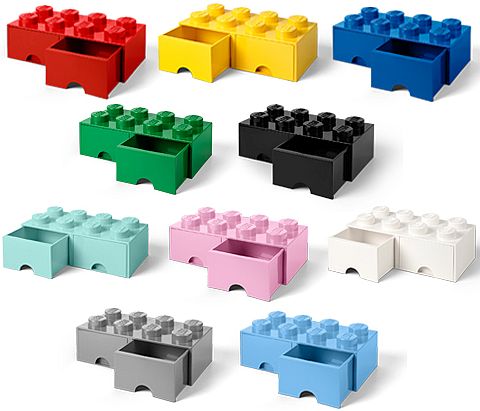(Written by William)
When the LEGO Elves line was introduced back in 2015, they immediately got my attention. While most sets with mini-dolls use very simple building techniques, the LEGO Elves sets required some more serious building skills. They were still not as complex as some of the more advanced sets in other lines, but then came the #41184 LEGO Elves Aira’s Airship & Amulet Chase, and I was blown away by the building techniques! 🙂

Mind you, it has been a while since I had time to build an official LEGO set. I’ve been working on my own LEGO model for some time now (which I might write about in a later article), so I’m not sure if it was just refreshing to build an official LEGO set, or if Aira’s Airship is really just that wonderful. I’m inclined to think the latter. But, enough of my gushing, the bottom line is that I like the set, and below I will show you why.
➡ COMPLEX SYSTEM WITH LEGO BALL JOINTS
In past articles, we’ve discussed how simple machines are used in official LEGO sets. Levers, wheels, pulleys, wedges, etc. all help to make novel little moving elements. A more complex system takes multiple of these simple machines and combines them. Many LEGO sets use complex machines, so in itself, this is not unusual, but what I especially appreciated is how Aira’s Airship’s utilizes small ball-joints.
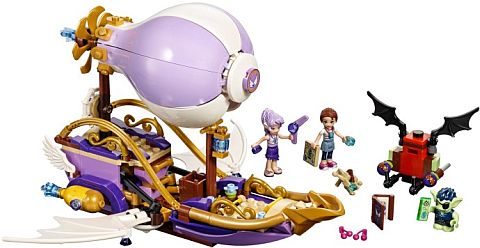
It would get a bit tedious to explain each and every simple machine component that makes up the more complex assemblies, so I’m just going to point out the important aspects of how the machines accommodate the ball joints. First, we look at the wings. Given the range of a ball joint, they need to have at least two types of motions to make it worthwhile. In Aira’s Airship, the wings have the ability to move forward and backward as well as up and down. Pretty much the only thing they can’t do is rotate in place.
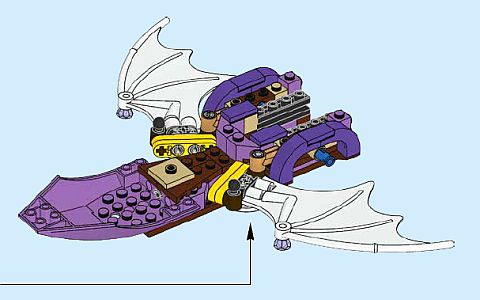
Since the wings have so much freedom of movement, it is less important for the trigger-mechanism to have the same amount of freedom. Rather, it only needs to accommodate the free moving wings when they are pulled and pushed. For this reason, the ball-joints that are in the trigger are attached to mobile liftarms to soak up any unusual movement.
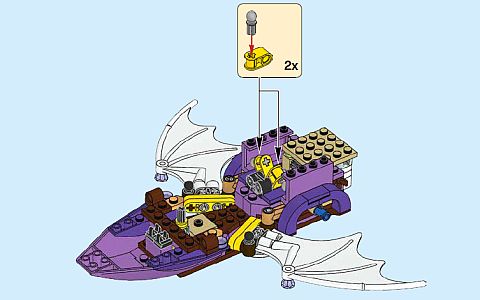
To achieve this, a couple of ball-joint connectors (also referred to as LEGO Technic Links Without Stoppers) are used. The piece is essentially a lever that lets you manipulate a ball-joint from a distance. LEGO designers often use rubber bands for this type of application, however the rigid nature of the ball-joint connectors not only gives us pulling tension like a rubber band, but they also let us push ball-joints back into their original positions.
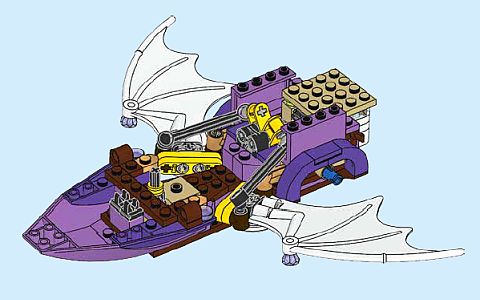
It is this rigid connector piece that makes the technique a possibility. In addition, many of the ball-joint receivers that hold onto a joint are made with an inherent friction, which means they can’t move freely. These extended ball-joint connectors are free moving, which makes them doubly unique.
If you want to try out this technique on your own, you’ll need some of these ball-joint connectors first. The piece comes in a number of LEGO Technic sets, and also some regular sets where LEGO Technic mechanisms are used. From there, you can play around with both sides of the connector. My recommendation is to make one end the free moving side with the other a bit more restricted. The restriction will give your moving elements control rather than looking like spastic convulsions.
➡ ALTERED GENRE WITH LEGO
Aira’s Airship is a very unique looking aircraft, and it was designed this way on purpose. You could say it’s something of a cross between fantasy and steampunk, and by being so different, it basically establishes its own genre. So how can you do this in your own creations? It is actually remarkably simple. You start out by building something recognizable. In the case of Aira’s Airship, we could start out with a fantasy ship or a steampunk flying ship. Either way, we cross genres so we can have a hybrid of the two.
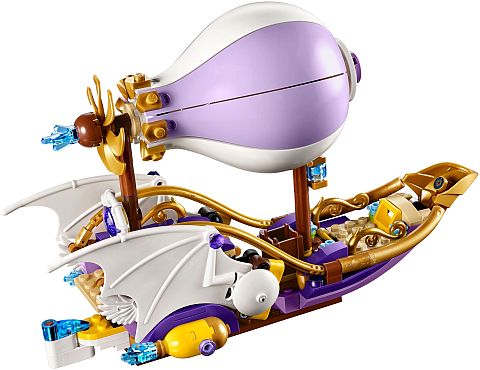
Steampunk has its characteristic engines and balloon, and we probably don’t want to mess with these as they look striking. This does mean however that we lose the usually beautiful sails of a fantasy ship, but maybe we can reintroduce them as wings on the side of the ship. Then for the engines, we can have them run on magic. Thus, you end up with a propulsion system that does not firmly belong to either genre.
The nice thing is that you can stop here, or continue with finding different areas to cross. Some areas you may consider are decorative elements, action elements, coloring, actual purpose (from a narrative point of view, i.e. attack vessel, courier, etc.), or dimensional (this is where the ship comes from one genre but finds itself in the other genre’s world). Depending on which area you tackle, it will guide you in very different ways. It’s also a great way to utilize parts and colors you wouldn’t normally think of combining.
➡ APPLYING WHAT YOU LEARN
Small ball-joints offer a lot of very interesting opportunities, so it’s worth studying how they are used in official LEGO sets, and how they are connected to other pieces to create complex moving sections. Sometimes restricting the movement of the ball-joint by rigid pieces is exactly what you need.
As for using altered genres, this is the technique you want to master if you are creating your own original worlds. You can start playing with ideas in “What if…” scenarios. For example, what if Santa had his own LEGO Star Wars ship? What if there was a LEGO Modular Building in the old LEGO Castle line? What if the old LEGO Classic Space theme was featured in a LEGO Architecture set? Playing around with any of these ideas could create some interesting results.

What do you think? How do you like the LEGO Elves sets, specifically Aira’s Airship? Are there any other interesting building techniques that you noticed? Do you like to work with ball-joint pieces? And how about creating your own genres to create unique environments? Feel free to share your thoughts and discuss in the comment section below! 😉
And you might also like to check out the following related posts:



